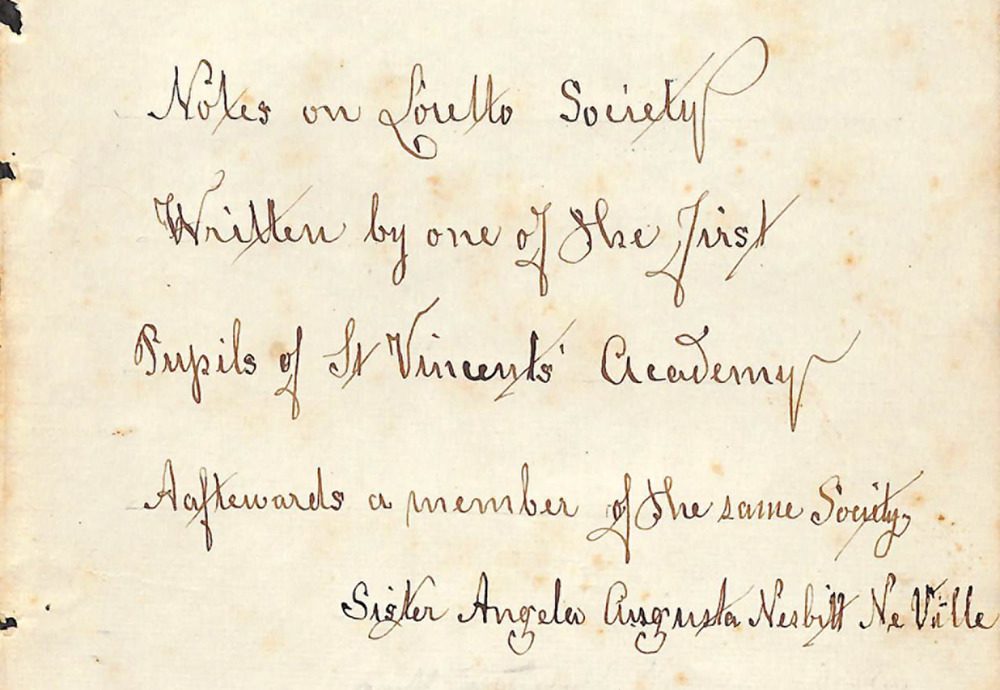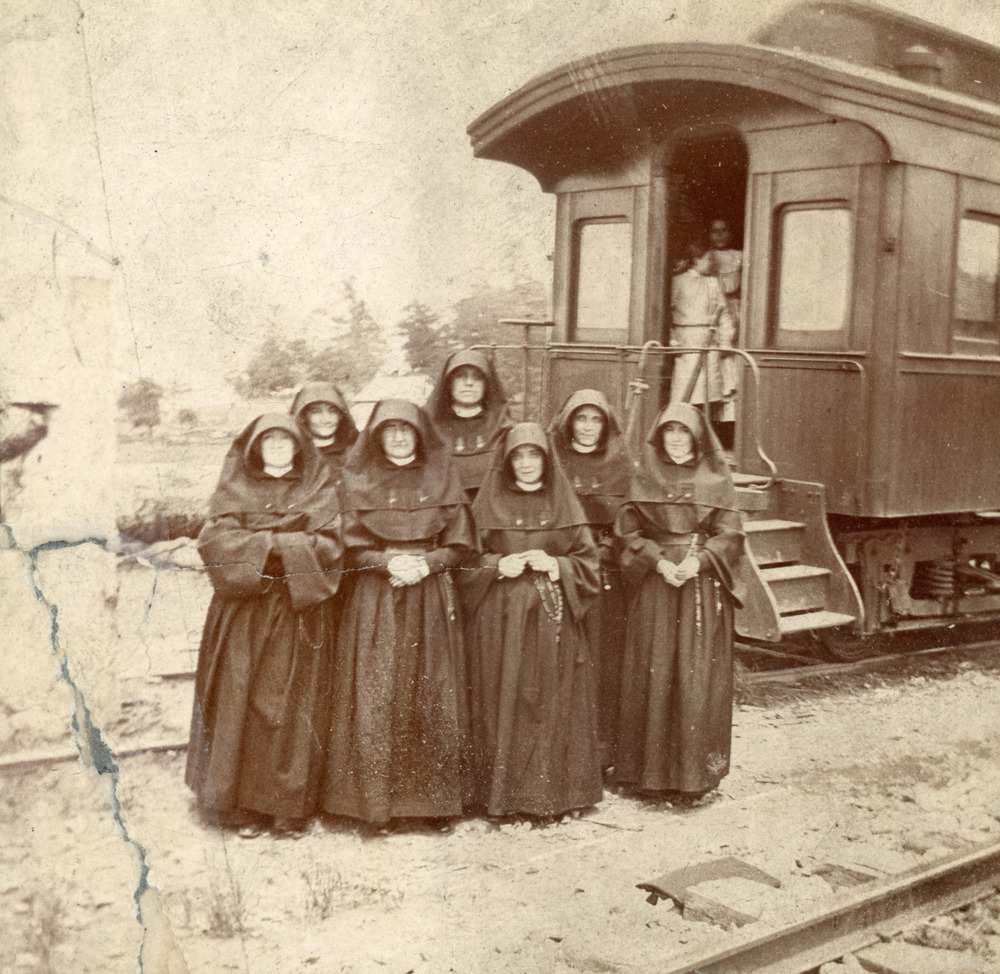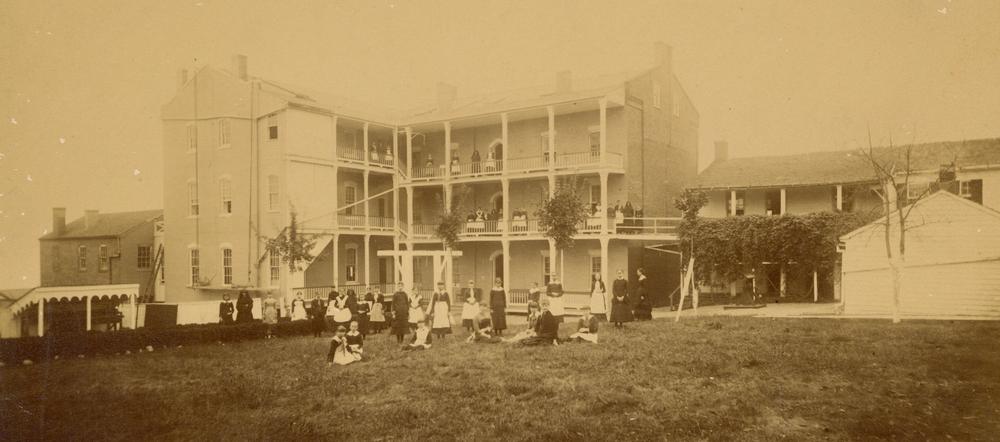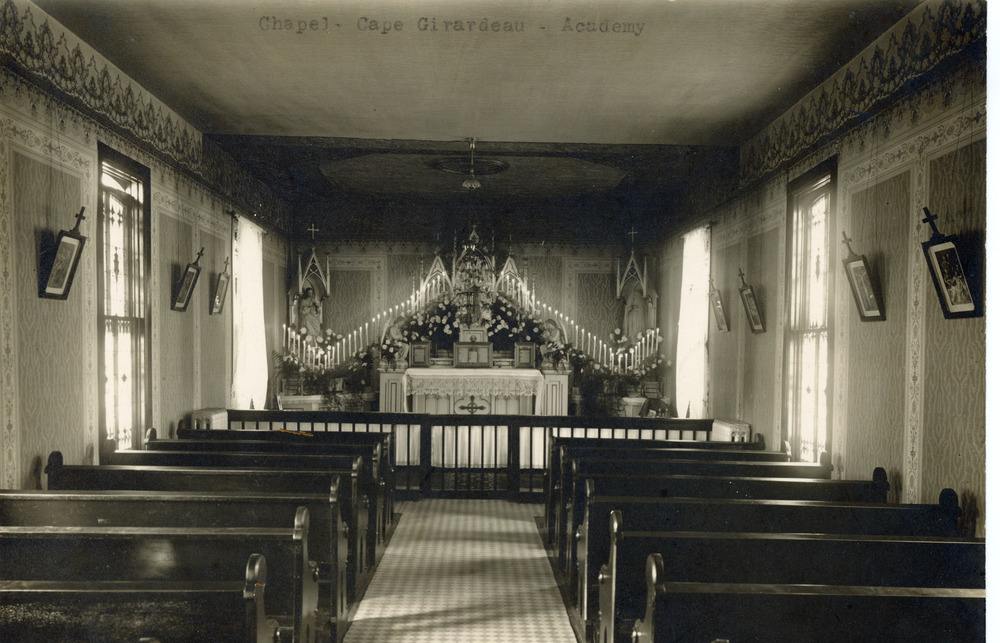Tragedy and Triumph: The Early Days of Lorettines in Missouri
Posted on August 19, 2022, by Loretto Community
By Katie Daugherty
The Heritage Center was thrilled to welcome Katie Daugherty as our 2022 summer intern. Katie came from Sylva, NC, where she is Head of the Circulation Department at her local public library. She recently completed a Post-Graduate Certificate in Archival Studies from Louisiana State University. Over the summer, her projects included processing archival collections, working with Loretto’s digital biographical records, and re-housing historic textiles.
While life on the frontier was never a seamless one, it’s hard to imagine that the Sisters of Loretto guessed the amount of hardships they would face during their first few years in Missouri. From poverty and prejudice to tornadoes and fires, the Sisters had to overcome many obstacles to create a presence in Missouri.
Through surviving annals and correspondence, we get a glimpse into the lives of these early Missouri Sisters and the hardships they faced. It is from another source, however, that we’re able to get the most detailed account of the everyday struggles of these Lorettines. Through the handwritten manuscripts of Sister Angela Augusta Nesbitt, who was first a pupil at St. Vincent’s Academy in Cape Girardeau and then a vowed sister, we’re able to see those early days through the eyes of someone who was there. Sister Angela writes about things she experienced as well as the stories that were relayed to her by other pupils. Through these personal writings, we get a more intimate glimpse into the occasionally tragic but ultimately triumphant story of the first Sisters of Loretto in Missouri.

From the collections of the Loretto Heritage Center
Before we learn the tales of Sister Angela, let us explore some of the background information about the Sisters’ journey to Cape Girardeau, MO. In 1823, just 11 years after their founding, the Sisters of Loretto ventured to set down roots outside of Kentucky for the first time. Called upon by Bishop Louis William Valentine DuBourg to assist with the Dioceses of Saint Louis, eleven Sisters, one novice, and one postulant left the Motherhouse on May 12, 1823, and began to make their way to an area called the Barrens in Perry County, MO.

From the collections of the Loretto Heritage Center
The obstacles began as soon as the Sisters left the Motherhouse and started their trek to Missouri. After making it to Louisville, the Sisters boarded a steamer called The Cincinnati to take them down the Ohio River. While the Sisters were on board, the boat was thought to be sinking on three separate occasions. Unfortunately, this would be only a foreshadowing of more misfortune that was to come.
Upon their arrival, the Sisters found that their convent had not yet been completed. It took another 23 days for the Sisters to be able to move into their own space. The early annals described the convent as a small log house and likened the “poverty” of structure to the stable of the Nativity. This led to the name of the new Loretto foundation: Bethlehem. Once settled, the Sisters continued to face many hardships. The first summer in Missouri found multiple Sisters facing serious illness. In 1825, a fire destroyed the kitchen, which had doubled as the Sisters’ workroom. The same year, the poverty amongst the Sisters was so severe that they had to send away the orphans who were attending the school, as the Sisters could no longer support them. In April 1830, a few Sisters were sent to Applecreek, MO, to start a school, but just two short years later, the school at Applecreek was dissolved. Multiple other schools were created through Sisters sent out from Bethlehem, including St. Michael’s school in Fredericktown and St. Mary’s school in New Madrid, though neither of these schools would last more than a few years. Finally, in 1838, a small group of Lorettines consisting of the Mother Superior, four Sisters, one novice, and five boarders established a convent and school in Cape Girardeau. This new school was called St. Vincent’s Academy.

From the collections of the Loretto Heritage Center
It is here in Cape Girardeau that Sister Angela Augusta Nesbitt was a pupil. In her manuscript, she writes that one of the biggest struggles that the Sisters had to overcome was the prejudice of the local community, which was predominantly Protestant. As a symptom of this prejudice, the Sisters were accused of all kinds of wrongdoing and negligence. The Sisters were even accused of murder, with one local member of the community saying Sister Leocadia Carney had been killed. When this rumor wasn’t taken seriously, the Sisters were then accused of locking Sister Stanislaus Landry away in the cellar of the Academy, where local community members claimed she was being starved. This accusation made its way to the authorities and resulted in the mayor demanding to see Sister Stanislaus. Sister Angela describes that “great was the astonishment” when the mayor found “her the picture of health” and “the possessor of sound fat.” Upon further questioning, the mayor learned that the Sister spent time in the cellar sewing because of the cooler temperature.
The manuscript goes on to reveal it was not just the Sisters actively fighting prejudice, but also the students. In one story, a French pupil by the name of Lucie Philomene Nesbit Ne Ville noticed a group of young men who stood on a nearby hill every day. When Lucie learned that these men were watching the convent in hatred, looking for flaws amongst the Sisters, she began collecting bricks, which she would then throw at the group every half hour until they dispersed.
Unfortunately, this prejudice caused more harm than just false accusations and groups of young men acting as spies. It also made it difficult for the Sisters to acquire the goods and food needed to keep both themselves and their pupils alive and well. Sister Angela describes that there were days that pupils were allowed to sleep in purely because there was no food for breakfast. Other times, Sisters would be forced to “make their dinner of roasted potatoes and salt” to ensure their students had enough to eat.
While the tragedies told are plenty, there are many occasions of miracles described in the manuscript and the annals. Oftentimes, when tragedies struck the Sisters at Cape Girardeau, miracles seemed to emerge a moment later, often minimizing damages.
One instance of a miraculous event came in 1841, when a lightning storm damaged the school. While the Sisters had remained safe from the storm in the dormitory, the school’s attic had been struck by lightning. The walls and floor had been scorched, and all of the Sisters’ clothing that had been hanging up in the attic had been burnt to ashes. The lightning had extended as far as the mantelpiece in the chapel below. Within this tragedy however, was a hidden miracle: a picture of the Immaculate Conception which hung above the mantelpiece had somehow remained undamaged, even though all the gilt of the frame had burned away.

From the collections of the Loretto Heritage Center
This was not the only miracle recorded. When a tornado swept through Cape Girardeau on November 28, 1850, Sisters reciting their afternoon devotions in the chapel had to escape to safety when the walls of the chapel began to collapse. After the tornado had passed, the Sisters found the statues of Joseph and Mary amongst the ruins of the chapel. The statues had remained upright and were undamaged. In addition to the statues, the tabernacle, which had been lifted and carried away by the storm, was later found standing upright and unharmed. While other miraculous phenomena are peppered throughout the history of the Sisters in Missouri, perhaps the most impressive miracle of all was that through the storms, poverty, hunger, prejudice, and trials, the Sisters were able to persist. The academies at Cape Girardeau would go on to serve the community for 84 years before closing in 1923. From Cape Girardeau, Sisters of Loretto set out to establish many other schools in Missouri, and they eventually staffed over 20 parish schools within the Archdiocese of St. Louis. Thanks to their hard work and determination, the Sisters would build a presence in Missouri that still exists today.
